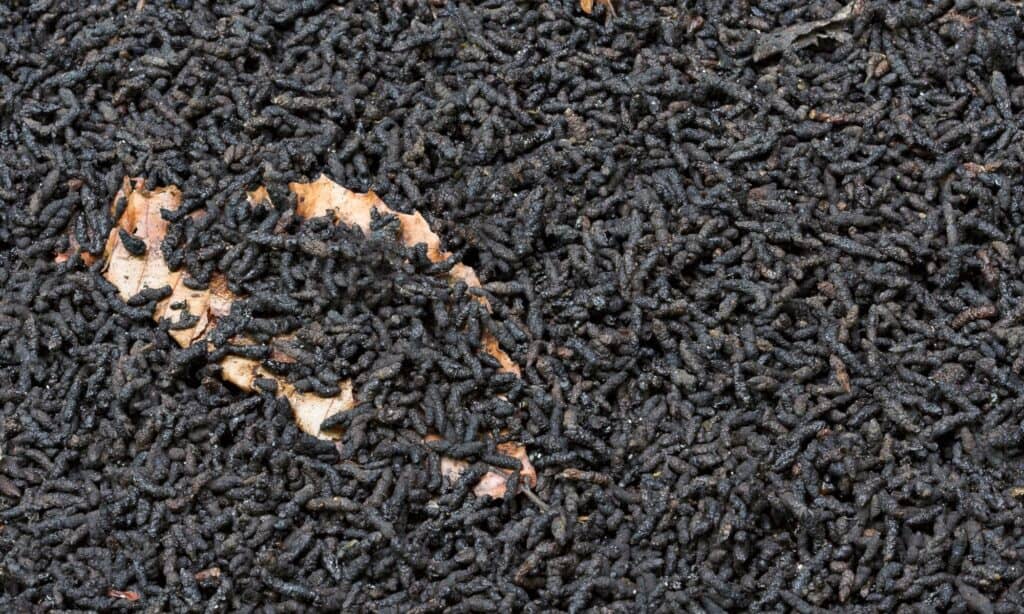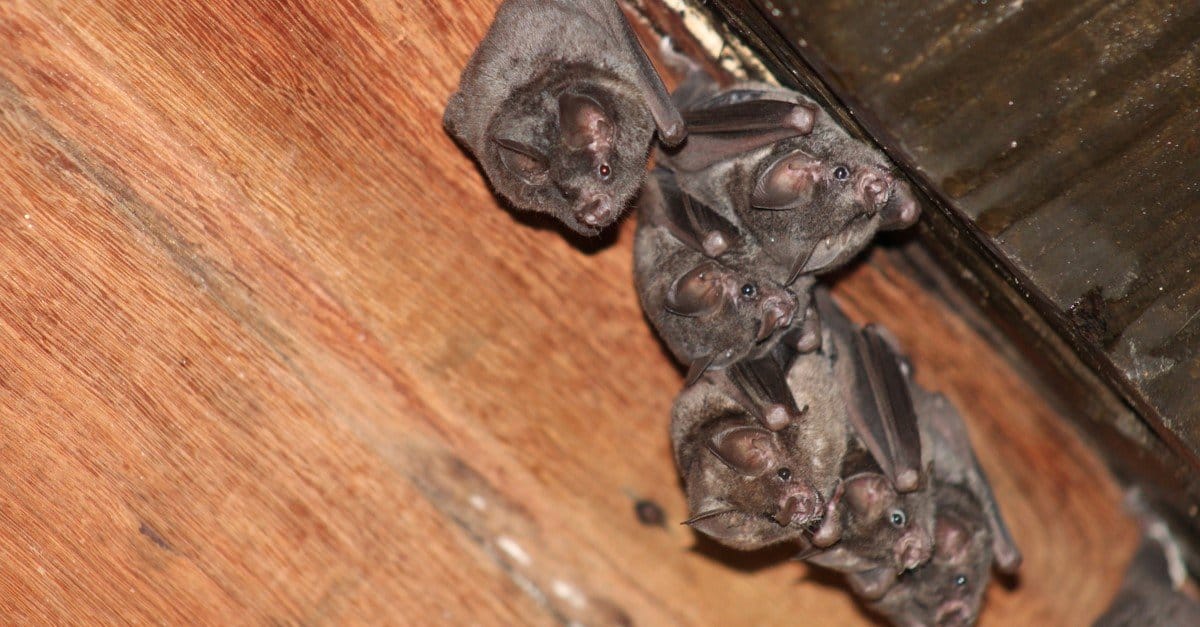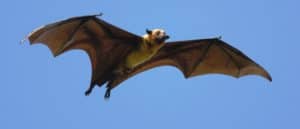When we think of bats, we often assume they live in caves or far from any human civilization. However, they can actually be a very common guest in your home, and they could be taking refuge in the coziness of your attic.
Bats can actually pose a serious threat to your family’s health if not dealt with and removed quickly. While they are mostly nocturnal and spend most of the day resting, their activity at night can be both noisy and dangerous.
Here are some tips on not only how to determine if your attic is home to a group of bats, but how to both safely remove them and prevent them from coming back.
1. Guano

Bat droppings, also known as guano, can carry a host of infectious diseases.
©iStock.com/sbonk
“Guano” is just a fancy way of saying bat droppings. It is often the most obvious (and smelly) sign that you have a bat problem. Bats often produce piles of stuff wherever they are roosting. They can result in a very unpleasant and constant odor, and pile up in large quantities along your roof, floor, and even insulation.
Bats are nocturnal creatures, and you often do not find them just being out in the open during the day, likely taking refuge in the more isolated areas of your attic. But guano is also incredibly dangerous, as it can carry bacteria capable of carrying diseases like rabies and also provide the perfect growing environment for the fungal spores that can cause histoplasmosis.
This is a respiratory disease that often causes chills and severe coughing and affects every part of the body. If left untreated, it can even be fatal. The large accruement of guano can allow the spores to grow, become airborne, and be inhaled by you or your family.
2. Noise

Bats are nocturnal creatures, so they are often most active either during the evening or when there is very little light.
©Rudmer Zwerver/Shutterstock.com
Despite being nocturnal, bats can be a noisy lot. Since they are blind, they often make loud screeching noises to see where they are going. We know this as echolocation.
Other animals, like dolphins, also use it to navigate. Obviously, making such loud noises just to move around is going to be difficult to not notice, though bats can make other noises, too.
Scratching, wing flapping, and other noises may also be signs that there are bats moving around in your attic. Some of these may also be signs of rats or other pests, but if you start to hear something that sounds distinctly fluttery, it’s most likely a bat.
That and the constant screaming, of course.
3. Smudge Marks or Oil Streaks

If entering through certain entry points, bats can often leave stains or streaks all over your ceiling or walls.
©NeagoneFo/Shutterstock.com
Bats, like many pests, have little in the way of good cleanliness. Aside from leaving their droppings everywhere for fungi to grow, they can also urinate and defecate in other parts of your attic, like the walls and ceiling.
Oftentimes, this will result in smudgy smears or streaks alongside your walls or in certain outside entry points where the bats entered from. These are often very easy to notice either in your attic or near entrances to it from the outside.
4. The Bats

Bats are very territorial and will often return to a nesting spot yearly once they’ve found one.
©Lillian Tveit/Shutterstock.com
Depending on where you live, the kind of bats that you may encounter in your attic can vary widely. However, most bats are the same in the sense that once they find a good roosting spot, they will make that their new home.
If you ever find yourself up in your attic, it can be very easy to notice a big, hairy, flying rat sitting upside down in your insulation, on your roof, or in other isolated parts of your space. This can be the most obvious sign if you are able to catch the bat coming into your attic, though it can become even more noticeable if a nest starts to form.
Some bats are only about the size of your thumb, while others can grow to be the size of a small mouse or rat. It really depends on where you live. Seeing a bat hanging from your insulation or large congregations may sound like an obvious indicator, but once they choose a place to nest, they rarely want to leave or look elsewhere.
It is also possible to see either dead bats lying around or see them literally flying from your attic during sunset or sunrise.
Tips, Prevention, and Removal

Hiring a professional is the safest option for bat removal and prevention.
If you start to notice bats in your home, the most logical course of action is to simply call a professional to remove them safely. While there are temporary deterrents such as mothballs or boxes, they are not nearly as effective as calling a professional.
Several species of bats are protected as endangered under certain laws, so generally, it is illegal to try and kill them, not to mention extremely dangerous. Even if you are aware that there are only one or two bats in your home and confident that you can capture and release them in a box or container, it is not recommended.
Bats are very territorial and, as mentioned above, their nests can often be a hub for various airborne and contact-based diseases like rabies and histoplasmosis. As a result, it is recommended you call your local animal control office to see if they have bat removal services available or know of any others in your area.
In terms of prevention, it is recommended that you seal up any openings to your attic from the outside and clean your attic regularly. Typically, a bat removal service will take care of this for you and handle the removal and prevention of bats in your home. However, if you are able, it is good to stay alert about what is lurking in your attic and keep it as clean as possible.
| Rank | Bat Signs/Removal Tips |
|---|---|
| #1 | Guano |
| #2 | Noise |
| #3 | Smudge Marks and Oil Streaks |
| #4 | The Bats |
| #5 | Tips, Prevention, and Removal |
Thank you for reading! Have some feedback for us? Contact the AZ Animals editorial team.








